New search Hide text from Guidelines
J ANTIINFECTIVES FOR SYSTEMIC USEAntiinfectives are also classified in the following groups:
A01AB Antiinfectives and antiseptics for local oral treatment
A02BD Combinations for eradication of Helicobacter pylori
A07A Intestinal antiinfectives
D01 Antifungals for dermatological use
D06 Antibiotics and chemotherapeutics for dermatological use
D07C Corticosteroids, combinations with antibiotics
D09AA Ointment dressings with antiinfectives
D10AF Antiinfectives for treatment of acne
G01 Gynecological antiinfectives and antiseptics
P Antiparasitic products, insecticides and repellents
R02AB Antibiotics
S01/
S02/
S03 Eye and ear preparations with antiinfectives
Even systemically administered antibacterials and antimycotics may be classified in other groups if their target is exclusively local, e.g. the skin - D01 - Antifungals for dermatological use.
Inhaled antiinfectives are classified in J.
| The DDDs for the antiinfectives are as a main rule based on the use in infections of moderate severity. However, some antiinfectives are only used in severe infections and their DDDs are assigned accordingly. The DDDs assigned are based on daily treatment. The duration of the treatment periods is not taken into consideration. For antiinfectives given in a high initially starting dose followed by a lower daily "maintenance" dose, the DDDs are based on the "maintenance" dose if the total duration of the treat-ment course is more than one week. If, however, the treatment course is 7 days or less, the DDDs are assigned according to the average daily dose i.e. the total course dose divided by the number of treatment days (e.g azithromycin). |
J01 ANTIBACTERIALS FOR SYSTEMIC USE
This group comprises antibacterials for systemic use, except antimycobacterials, which are classified in J04. The antibacterials are classified according to their mode of action and chemistry.
Combinations of two or more systemic antibacterials from different third levels are classified in J01R, except combinations of sulfonamides and trimethoprim, which are classified at a separate 4th level, J01EE.
Combinations of antibacterials and tuberculostatics are classified in J04AM.
Combinations of antibacterials with antiparasitic agents are classified in J01R.
Combinations of antibacterials with other drugs, including local anesthetics or vitamins, are classified at separate 5th levels in the respective antibacterial group by using the 50-series.
Inhaled antiinfectives are classified here based on the fact that preparations for inhalation can not be separated from preparations for injection.
J01X OTHER ANTIBACTERIALS
This group comprises antibacterials with various modes of action not classified in the preceding groups.
J01XB Polymyxins
This group comprises polymyxin antibacterials acting on the bacterial cytoplasm membrane. Oral formulations containing colistin are classified in A07A.
| ATC code | Name | DDD | U | Adm.R | Note |
| J01XB01 | colistin | 3 | MU | Inhal.powder | |
| 3 | MU | Inhal.solution | |||
| 9 | MU | P | |||
| J01XB02 | polymyxin B | 0.15 | g | P |
Last updated: 2024-12-27

